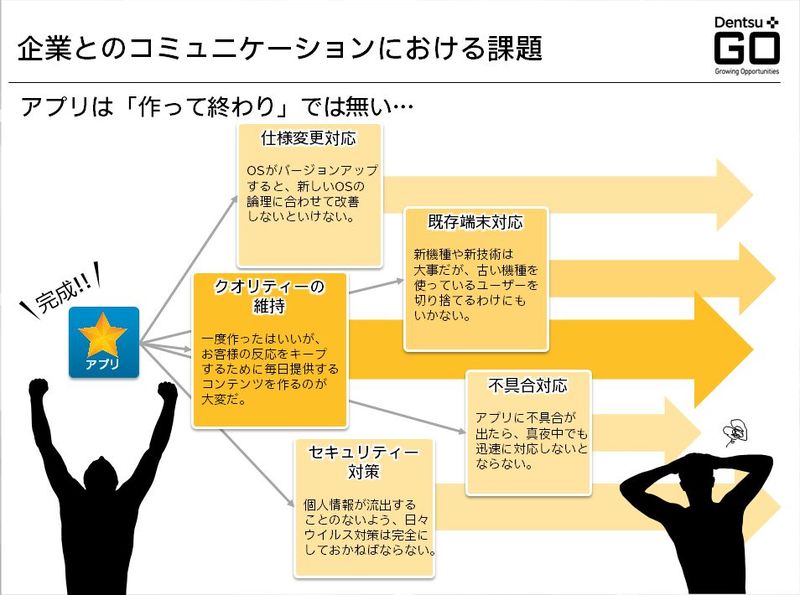Smartphones have become indispensable for corporate communication. The use of apps, in particular, holds significant meaning for creating direct pathways that lead to sales. The first part clarifies why smartphone business is important, outlines the challenges involved, and explains key points for future utilization.
Opportunities and Challenges in Smartphone Business
According to a Video Research Ltd. survey, as of February 2014, personal smartphone ownership exceeded 50%. Furthermore, the latest data from the Ministry of Internal Affairs and Communications (January 2013) shows ownership rates among middle-aged and older adults: 63.4% for those in their 40s, 58.5% for those in their 50s, and for those in their 60s, it reached 26.1%, nearly double the previous year's figure. Regionally, while Kanto and Kinki show high rates, even areas with lower penetration like Hokkaido and Tohoku now exceed the previous year's Kanto figures. This demonstrates smartphones are no longer limited to youth or urban areas but are widely adopted.
Smartphones are devices carried constantly, 24 hours a day. With the emergence of apps boasting reach comparable to mass advertising, they have become indispensable for corporate communication.
There are three specific opportunities for leveraging smartphones. First, they enable approaching users at the right time and place to connect them with products or stores. For example, the latest technology, "iBeacon" using Bluetooth, can automatically send information or coupons to a user's smartphone when they approach a specific sales area or location. The second opportunity is creating personalized engagement for each user, enabling deeper communication tailored to individual circumstances and needs. The third is the ability to individually capture data on when, where, and what a user purchased.
On the other hand, there are three challenges in smartphone-based communication. The first is how to make users aware of, download, and use an app that took significant time and effort to create. The second is that even if users download the app, they might not launch it. With so many apps available, it can get buried, and even push notifications might be perceived as annoying. The third challenge, arguably the most significant, is the substantial operational effort required after the app is built.
External factors include adapting to new OS specifications, maintaining quality across existing devices, addressing bugs, and implementing security measures. Internally, there's the ongoing challenge of producing content over the long term. As such, app development is not straightforward, making it crucial to thoroughly assess whether the investment will yield sufficient return beforehand.
There are two approaches to solving these challenges. The first, obviously, is to use apps already installed on users' smartphones. This eliminates the hurdle of getting users to download the app. The second is to integrate into apps that users inevitably open daily, such as calendars, transit guides, or weather forecasts. This approach also resolves operational concerns. By delegating labor-intensive tasks to platform-side apps, companies can focus on delivering necessary messages within that context.
※Part 2 is scheduled for update on Thursday, August 7.


